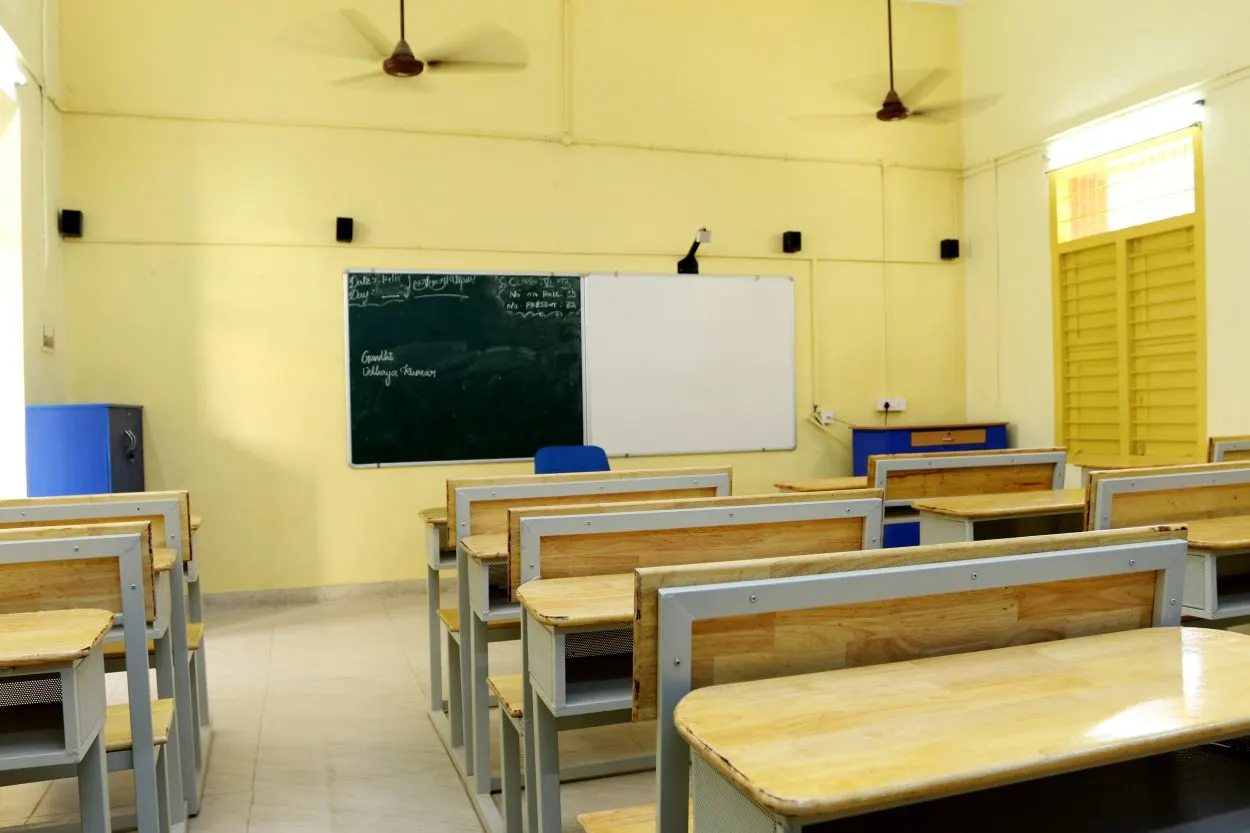Every country has its own way of allocating its education system into different stages. No matter the allocation, every country’s priority is to make it easier and, at the same time, efficient for their students. They prioritize how and in what way their culture and history will be best consumed.
India is no exception when it comes to constantly finding new ways to improve and develop its education system. Until July 2020, the educational system of India was based on the 10+2 system, meaning that it was divided into two stages of schooling 10 years and then two years of higher secondary schooling. The students would complete the 10 years and get rewarded with a Secondary School Certificate (SSC) and a Higher Secondary School Certificate (HSSC) after completing the 12th year.
However, in July 2020, the New Education Policy was implemented, reshaping India’s educational system. As a result, one of the major changes it brought was replacing the 10+2 system with a 5+3+3+4 system. The last 4 years of education are collectively called ‘secondary education,’ which covers the age from 14 to 18 years.
What are the levels of Education in India?
Secondary education is divided into two stages, from grade 9-10 and grade 11-12. These 4 years of education are given in a high school. It may be collectively called a high school, nevertheless, the last 2 years of high school, from grade 11-to 12, are recognized as to be called a secondary school in India. The secondary school is further split into halves, meaning that the last year of secondary school, the 12th grade is called a senior secondary school.
Since we have briefly described the current educational system of India, it is only fair to know its commencement. To best understand the current education system of India, we must take a look at the history of its education system and how the levels have changed over the years.
Is High School and Secondary School the Same in India?

The school system in India is confusing but not complicated to understand. The Indian school system has four levels, which are called lower primary, which is divided into five standards (age 6 to 10), the upper primary is divided into two (11 and 12), high school is divided into three (13 to 15), and higher secondary into two (17 and 18). Primarily, students study the same curriculum, except for regional changes and their mother tongue until the end of high school.
Different schools have different terms to refer to different classes, for instance, some schools refer to courses of 11th and 12th as high school, and for other schools, high school may refer to classes from 6th to 12th. Secondary education covers students aged 14 to 18 and the last two years are referred to as Higher Secondary (HS), or Senior Secondary. Moreover, the two final years can also be called the “+2” stage. Considering all the information, you can say that, high school and secondary school are the same as it mainly depends on each school.
Most of the time, high school is referred to as the classes of 9th to 10th, and secondary school is referred to as the classes of 11th to 12th. Furthermore, in some regions, high school is referred to as the classes of 9th to 12th, and secondary school is referred to as the 4-year bachelor’s degree in an undergraduate program.
Here’s a table to better understand how the classes are mostly categorized.
| Stages | Grades | Ages |
| Primary School | 1st grade to 5th the grade | 6 years to 10 years |
| Middle School | 6th grade to the 8th grade | 11 years to 14 years |
| Junior High school | 9th grade to 10th grade | 14 years to 16 years |
| Senior High school | 11th grade to 12th grade | 16 years to 18 years |
What do they call high school in India?

As every school has its own way of categorizing classes, there’s no definition for high school in India, even in a general way.
It’s quite complicated to conclude what high school is called in India because every school refers to it with reference to different classes. In some schools, high school is referred to as the classes from 11th to 12th, while in other schools, high school is referred to as the courses of 6th to 12th.
However, in most regions of the world, high school is referred to as the classes of 9th to 10th, while in other regions, it’s referred to as the classes of 9th to 12th.
What does secondary school mean in India?
In India, secondary school begins in grade nine and ends in grade twelve. It’s made up of two levels, typically called the lower and upper secondary school, and 17 to 18 aged teenagers are the students.
Generally, secondary school can be defined in two ways: one is that it’s used to refer to the classes of 11th to 12th, and another way to define it is that secondary school is also referred to as the 4-year bachelor’s degree in an undergraduate program.
History of the educational system in India

India initiated their education most simply and traditionally, with the name ‘Gurukul.’ Gurukul was the first and foremost system of how education will be imparted to the young in India, which was initiated dating back to around 5000 BC.
It started in the most traditional way of India, where the students not only received knowledge through books but, in addition to that, were taught about religious, spiritual, and physical welfare studies, where even the mode of communication was the ancient Sanskrit language. The students were required to live with their teacher or close to the school to develop an emotional bond between the teacher and students for the better transmission of knowledge.
However, today, to keep up with the pace of the world, India’s educational system has undergone drastic changes. Lord Thomas Babington Macaulay introduced the modern system of education in the 1830s. As seen today, the modernized curriculum took precedence over the curriculum of Gurukul, which included moral, ethical, and spiritual learning.
As opposed to that, the modern curriculum comprised subjects focused on technology and taught in English. As subjects like science and mathematics took precedence over subjects like metaphysics and philosophy, the emphasis was put on the competitive system of examination and grades, contrary to the educational system of Gurukul.
What are the types of schools in India?

As mentioned above, the educational system of India is divided into 4 stages: the foundational stage, preparatory stage, middle stage, and secondary stage. Similarly, the schools are split according to the stages.
- The foundational stage is from 3 to 8 years old, split into two stages. The first is 3 years of preschool, and the second is 2 years of primary school, where the studies are primarily based on activity and the development of language skills.
- The second stage is the preparatory stage, from 8 to 11 years old. In this stage, students are introduced to subjects like mathematics, science, and languages, as well as skills like writing and reading, taught in primary school.
- The third stage is the middle stage, from 11 to 14 years old. This stage covers the grades from six to eight, where students are taught to grasp the concepts of critical learning of subjects like humanities, arts, and science taught in middle school.
- The secondary stage starts from 14 to 18 years old, where the students are provided with multiple subjects as options to choose from per their interests. This stage covers the classes from 9 to 12, where the students are taught critical thinking and about their chosen subjects in depth. This stage is taught in high school.
Check out the video below to learn more about the schools in India.
To Conclude
- India’s education system underwent a significant transformation in July 2020. They implemented a New Education Policy, replacing the 10+2 system with a 5+3+3+4 structure.
- Secondary education in India spans four years, ages 14 to 18. They divide them into two stages: grades 9-10 and 11-12.
- The terms “high school” and “secondary school” in India vary widely. It depends on the school, region, and context. It makes it challenging to establish a universal definition.
- The history of India’s education system traces back to the ancient Gurukul system. It emphasizes holistic learning, spirituality, and a close teacher-student bond.
- Lord Thomas Babington Macaulay introduced the modern education system in the 1830s. It prioritized the subjects like science and mathematics. It marked a shift away from the Gurukul curriculum.
- India’s school system is divided into four stages: foundational, preparatory, middle, and secondary. Each of these caters to different age groups and educational objectives.
- The complex terminology of the Indian education system highlights the diversity of its educational landscape. It reflects the nation’s rich cultural and historical heritage.
Other Articles
- WHAT ARE SOME DIFFERENCES BETWEEN AMERICAN AND BRITISH TEENAGERS?
- WHAT IS THE DIFFERENCE BETWEEN PLACIDUS CHARTS AND WHOLE SIGN CHARTS IN ASTROLOGY?
- WHAT’S THE DIFFERENCE BETWEEN A GANG & THE MAFIA?
- THE DIFFERENCE BETWEEN AN ITALIAN AND A ROMAN

